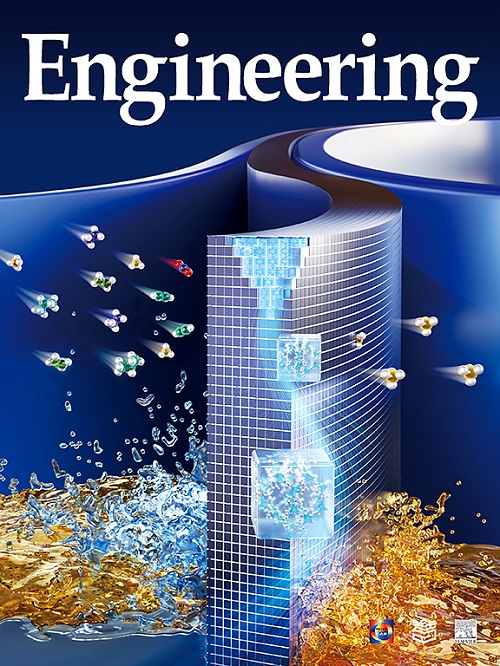Lycium barbarum L.-Derived miR162a Functions on Osteoporosis Through Directly Promoting Osteoblast Formation
IF 10.1
1区 工程技术
Q1 ENGINEERING, MULTIDISCIPLINARY
引用次数: 0
Abstract
Traditional Chinese medicine (TCM) can help prevent or treat diseases; however, there are few studies on the active substances of TCM. For example, Lycium barbarum L. has been proven to be effective in treating osteoporosis for thousands of years, but its active substance remains to be unknown. Prompted by the efforts to modernize TCM, the present study focused on the novel active substance of Lycium barbarum L. to reinforce kidney essence to produce bone marrow. Illumina deep sequencing analysis and stem-loop polymerase chain reaction (PCR) assay revealed that miR162a, a Lycium barbarum L.-derived microRNA, can pass through the gastrointestinal tract to target the bone marrow in mice. Immunofluorescence staining showed that miR162a was absorbed through systemic RNA interference defective transmembrane family member 1 (SIDT1) in the stomach. Bioinformatics prediction and luciferase reporter assay identified that miR162a targeted nuclear receptor corepressor (NcoR). Alizarin red staining and micro-computed tomography (microCT) confirmed that miR162a promoted osteogenic differentiation in bone marrow mesenchymal stem cells, zebrafish, and a mouse model of osteoporosis. In addition, transgenic Nicotiana benthamiana (N. benthamiana) leaves overexpressing miR162a were developed by agrobacterium infiltration method. microCT and tartrate-resistant acid phosphatase staining confirmed that transgenic N. benthamiana leaves effectively protected against osteoporosis in mice. Our study mechanistically explains how Lycium barbarum L. improves osteoporosis and supports that Lycium barbarum L. reinforces kidney essence, thereby strengthening the bone. miR162a expressed by transgenic plants may represent a novel and safe treatment for human osteoporosis.

枸杞l .衍生miR162a通过直接促进成骨细胞形成对骨质疏松的作用
中医可以帮助预防或治疗疾病;然而,对中药活性物质的研究却很少。例如枸杞(Lycium barbarum L.),数千年来已被证明对治疗骨质疏松症有效,但其活性物质仍不清楚。在中医药现代化的背景下,本文对枸杞补肾生骨髓的新活性物质进行了研究。Illumina深度测序分析和茎环聚合酶链反应(PCR)实验显示,枸枸籽衍生的microRNA miR162a可以通过胃肠道靶向小鼠骨髓。免疫荧光染色显示miR162a在胃中通过系统性RNA干扰缺陷跨膜家族成员1 (SIDT1)被吸收。生物信息学预测和荧光素酶报告基因检测证实miR162a靶向核受体共抑制因子(NcoR)。茜素红染色和显微计算机断层扫描(microCT)证实,miR162a促进骨髓间充质干细胞、斑马鱼和骨质疏松小鼠模型的成骨分化。此外,采用农杆菌浸渍法培养了过表达miR162a的benthamiana (N. benthamiana)转基因叶片。microCT和抗酒石酸酯酸性磷酸酶染色证实转基因benthamiana叶片对小鼠骨质疏松具有有效的保护作用。我们的研究从机制上解释了枸杞对骨质疏松症的改善作用,并支持枸杞补肾精,从而强化骨骼。转基因植物表达的miR162a可能是一种新的、安全的治疗人类骨质疏松症的方法。
本文章由计算机程序翻译,如有差异,请以英文原文为准。
求助全文
约1分钟内获得全文
求助全文
来源期刊

Engineering
Environmental Science-Environmental Engineering
自引率
1.60%
发文量
335
审稿时长
35 days
期刊介绍:
Engineering, an international open-access journal initiated by the Chinese Academy of Engineering (CAE) in 2015, serves as a distinguished platform for disseminating cutting-edge advancements in engineering R&D, sharing major research outputs, and highlighting key achievements worldwide. The journal's objectives encompass reporting progress in engineering science, fostering discussions on hot topics, addressing areas of interest, challenges, and prospects in engineering development, while considering human and environmental well-being and ethics in engineering. It aims to inspire breakthroughs and innovations with profound economic and social significance, propelling them to advanced international standards and transforming them into a new productive force. Ultimately, this endeavor seeks to bring about positive changes globally, benefit humanity, and shape a new future.
文献相关原料
公司名称
产品信息
希恩思
kukoamine A
¥585.00~¥30125.00
上海源叶
Prednisolone
¥41.00~¥10976.00
上海源叶
etidronate disodium
¥20.00~¥9054.00
希恩思
polysaccharide
麦克林
3-ethoxyaniline mesulfonate
阿拉丁
systemic RNA interference defective transmembrane family member 1 (SIDT1)
阿拉丁
peroxisome proliferator-activated receptor ?3 (PPAR?3)
阿拉丁
nuclear receptor corepressor (NcoR)
 求助内容:
求助内容: 应助结果提醒方式:
应助结果提醒方式:


